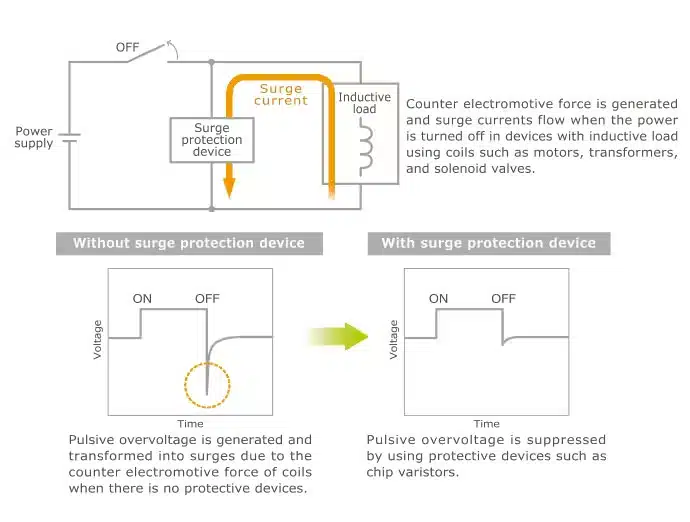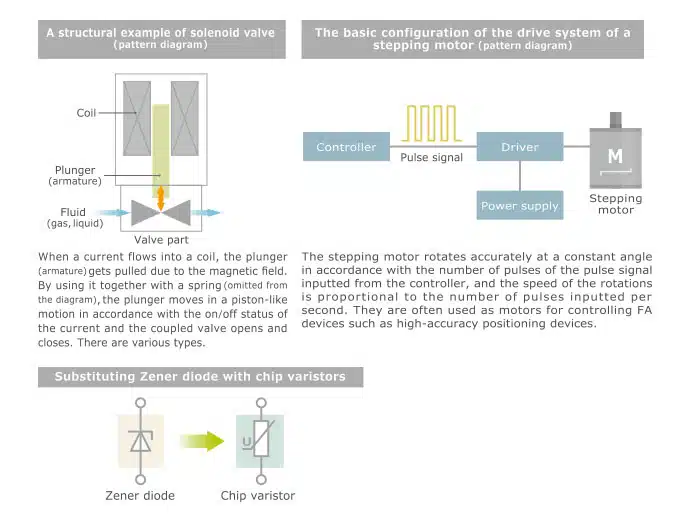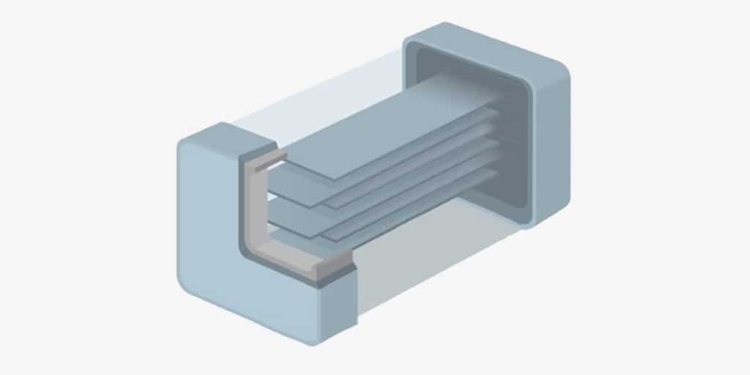TDK’s chip varistors in the AVR series, which are made with our own materials, feature high resistance to repeated surges.
Products that substitute Zener diodes in compact devices such as solenoid valves and stepping motors, which are rapidly and frequently turned on and off, are also available.
They can serve as substitutes for components such as Zener diodes in solenoid valves and stepping motors. This article describes the features of TDK’s chip varistors in the AVR series that excel in resisting repeated surges as well as the advantages of using them as substitutes.

Great amounts of counter electromotive force are generated when the power is turned off in devices with inductive load using coils such as motors, transformers, and solenoid valves due to the self-induction function of the coils, and this results in pulsive surges with high peaks ranging from several to over ten times the supplied voltage. Various surge protection devices such as surge absorbers and surge killers are used because these surges can cause circuits to malfunction or damage peripheral components such as semiconductor devices.
Devices such as chip varistors, Zener diodes, and TVS diodes are used in systems with relatively low circuit voltages. In any case, the circuits are protected by suppressing overvoltage that generates surges (Figure 1).
Chip varistors manufactured with a multilayering process are used in many electronic devices as for surge protection and ESD (electrostatic discharge) measures as they are compact but show excellent surge absorption performance and they are beneficial in terms of mounting space as well as in terms of cost. However, diodes such as Zener diodes and TVS diodes have been traditionally chosen for devices such as solenoid valves and a stepping motor (Figure 2) with high inductive load used while frequently being turned on and off. This is because chip varistors gave the impression that they are vulnerable to repeated surges generated from the power being frequently turned on and off.
TDK’s chip varistors in the AVR series, which are made with our own materials, feature high resistance to repeated surges. Products that substitute Zener diodes in compact devices such as solenoid valves and stepping motors, which are rapidly and frequently turned on and off, are also available. Substitutions for Zener diodes also have various advantages.
































